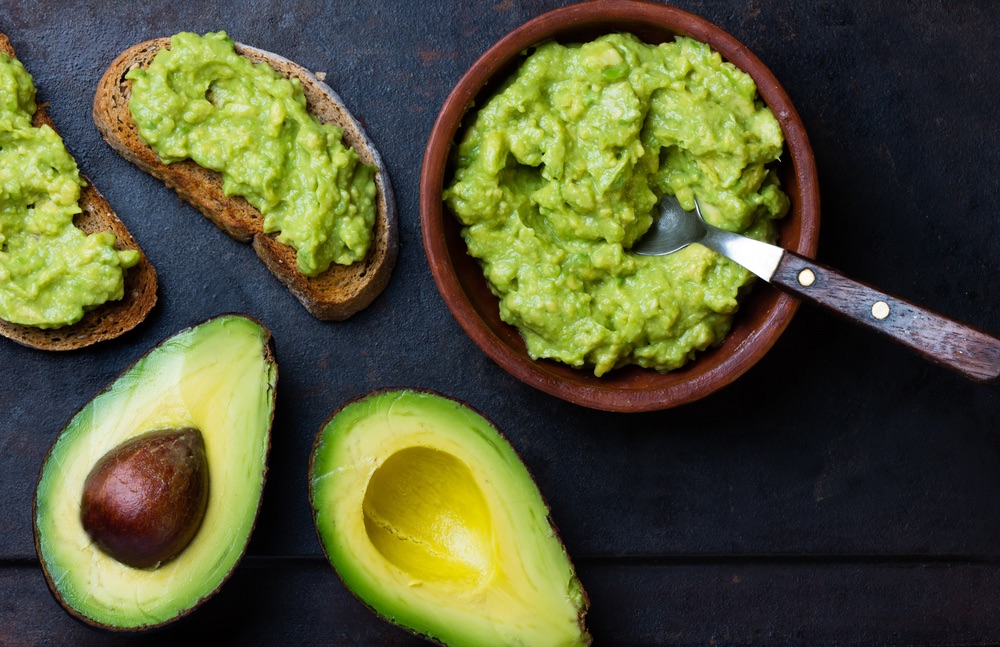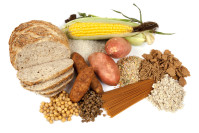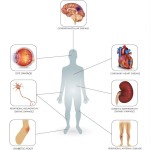- Home
- Dr Sultan Linjawi
Type 1 Diabetes
Type 2 Diabetes
Prediabetes
Gestational Diabetes
- Diabetes Information
- Testimonials
Is there a special diet for people with prediabetes?
If you are someone who has prediabetes, you may think that you should be following a special Diabetic Diet.
Not necessarily!
Why is diet important in diabetes?
There are many factors that can affect how well diabetes is controlled. Many of these factors relate to and are controlled by the person who has diabetes. These factors can include how much food and drink has been consumed, how frequently blood glucose levels are being monitored, exercise and physical activity levels, and consistency with taking any prescribed medications. Even small changes can influence and affect blood glucose control, for example exercising 3 days a week instead of 2 days.
PreDiabetes Content |
|---|
| PreDiabetes Program |
| Overview |
| Risk Factors |
| Symptoms |
| Diagnosis |
| Complications |
| Treatment |
| Diet |
| Monitoring |
| Tools |
| Mental Health |
| Prevention |
When it comes to food, eating a consistent amount of food every day and taking any medications as directed, can greatly improve blood glucose control. Doing this can help to keep blood glucose levels consistent, rather than having big highs and lows. Consistent blood glucose levels in the healthy range can reduce the risk of diabetes-related complications, including heart disease, kidney disease, and nerve damage. Eating regular meals can also help with weight loss!
If you’re struggling to stay motivated and want to learn more about what you can do to get on track with your diabetes management, you can join our personalised 12-week prediabetes program. There are so many great videos where Dr Sultan explains complex topics in simple terms that everyone can understand.
Eat regular meals
If you have prediabetes, it is important to have regular meals and snacks. If you skip any meals, your blood glucose levels can become low and you may experience the following:
- Binge eating episodes
- Fatigue and irritability
- Difficulty concentrating
It is also important that you spread your carbohydrates evenly throughout the day. If you do, it will ensure that your body is getting a steady supply of energy. Your doctor may have already recommended how many portions of carbohydrates you should have throughout the day. If this is the case, knowing your allowable carb portions each day can help you to spread evenly across the day. By doing so, you reduce the chance of your blood glucose levels going too low or too high.
You can learn more about carbohydrates from our article Carbohydrates and Diabetes or read how to reduce carbs in your diet if you need some easy and helpful tips.
Reduce your portion sizes
These days, people are eating bigger and bigger portion sizes. Coupled with a more sedentary lifestyle, it’s no wonder that obesity and other lifestyle related conditions are on the rise. The study Portion Control Plate for Weight Loss in Obese Patients With Type 2 Diabetes Mellitus has found that reducing the size of your meals has positive effects with blood glucose levels as well as assists in weight loss!
You might think, “but I’ll go hungry if I reduce my portion sizes too much!” I promise you; you will not go hungry!! Yes, it can be hard to make some changes to your portion sizes, but here are some tips of what you can do:
- Serve less – when serving your meal, put slightly less food on your plate than you normally would
- Use a smaller a plate – if you’re eating off of a smaller plate, your meals will look like it fills up more of the plate, so you won’t feel as though you’re necessarily missing out
- Make less – when preparing your meals, make less so you are less likely to add more food to your plate, or else portion out the excess into reusable containers for easy lunch options for the week ahead
- Avoid distractions while eating – if you can, sit and enjoy a meal with your friends or family as eating in front of a TV causes us to eat more!
- Eat more slowly – take time to feel full

Reduce foods that contain saturated fat
Firstly, let me be clear… all fats contain the same amount of calories so if you are after weight loss then swapping one type of fat for another makes little difference. Changing from butter to margarine won’t make you lose weight, but it will help greatly in other ways.
If you have diabetes you are at an increased risk of heart disease. Often people with diabetes also have high blood triglyceride levels, high blood pressure, and have clotting and circulation problems. These all explain why type 2 diabetes is associated with higher rates of heart attacks and strokes than the non-diabetic population.
Saturated fats are considered ‘bad’ fats and cause your ‘bad’ cholesterol to rise. This bad cholesterol is called low-density lipoprotein cholesterol or LDL cholesterol for short. LDL cholesterol is associated with heart disease. It can even contribute to the build-up of fatty deposits in your artery walls. This build up can disrupt how well your blood is able to flow because it narrows the space that the blood can flow through. The narrowing of your arteries can place additional pressure on your heart, making it work harder.
Saturated fat can be found in both animal foods and some vegetable fats. Animal products like fatty meat and dairy (milk, butter, cheese) all contain saturated fats.

Now, don’t go thinking that all veggies are bad. That is certainly not the case! But as mentioned, there are some vegetable fats that are high in saturated fats. Coconut is an example of this and is 90% saturated fats. Compare this to olive oil which is 15% saturated fat. Coconut products that contain a lot of saturated fats include coconut oil, milk, and cream.
Saturated fats are also found in foods like:
- Deep fried foods
- Fast food and take away food
- Meat pies
- Fatty meat and deli meat like salami or bacon
- Baked sweet foods like biscuits, pastries, and cakes
If you reduce your intake of saturated fats in an effort to reduce your risk of heart disease, your heart will thank you!
Go for the healthy fats instead
We still need some fat in our diets, as fat has a crucial role in our body. So not only is the amount of fat that we consume important, so is the type of fat (Prevention and Management of Type 2 Diabetes: Dietary Components and Nutritional Strategies).
You may have heard of the term ‘healthy fats.’ These healthy fats are monounsaturated and polyunsaturated fats. Unsaturated fats are able to assist in reducing your LDL cholesterol, with polyunsaturated fats able to do the job more effectively than monounsaturated fats.
Eating small amounts of mono- and polyunsaturated fats can help to ensure that our bodies are able to get the essential fatty acids and vitamins that it needs.
In cooking, you can substitute saturated fats for healthier fats such as using olive oil or grape seed oil instead of butter.
Sources of monounsaturated include:
- Olive oil and olives
- Canola oil
- Avocados
- Peanut oil and peanuts
Polyunsaturated fats are derived from the seeds of plants to then be made into oils. These plant seeds include:
- Grape
- Sunflower
- Soy beans
- Cottonseed
- Sesame

Increase your fibre intake
As well as being good for your bowels, a diet high in fibre can be beneficial with weight management. It is one of the easiest ways to improve your overall diet. Don’t forget the saying “an apple a day, keeps the doctor away!”
Fibre is a type of carbohydrate and can be divided into two categories: soluble and insoluble fibre. Soluble fibre is more important for diabetes management (High saturated-fat and low-fibre intake: a comparative analysis of nutrient intake in individuals with and without type 2 diabetes). Soluble fibre partially dissolves in water when it’s in the digestive tract, slowing the rate at which food is absorbed into the blood stream. This can cause blood glucose levels to rise more gradually and reduce the demand for insulin. Insoluble fibre does not dissolve in water and instead passes through the digestive tract. It’s important as it helps to provide bulk to our stools which can help to avoid constipation.
Examples of high fibre foods include:
- Soluble fibre: apples, oats, bran, prunes, and legumes
- Insoluble fibre: wholegrain breads, cereals, and pasta, cabbage, and carrots
A simple way you can incorporate fibre into your everyday, is by swapping white bread for whole meal bread and having a piece of fruit like an apple!

Drink alcohol in moderation
Drinking alcohol is common, especially when we are at a social engagement. If you are someone that drinks alcohol, you may need to limit your intake.
If you are trying to lose weight, your alcohol consumption may be getting in the way of your efforts. Alcohol offers little nutritional benefit and can also be high in energy! Also, alcohol is damaging to our bodies, for example our brain, liver, and pancreas. Excessive alcohol consumption is associated with an increased risk of certain types of cancers, including breast, colon, oral, and stomach cancers.
We should all limit our alcohol consumption to no more than two drinks per day. You might not realise that consuming four or more alcoholic beverages in a single occasion is actually considered binge drinking!
If you're overweight or obese, losing weight can make a huge difference
Having too much visceral fat (Visceral Fat Mass Has Stronger Associations with Diabetes and Prediabetes than Other Anthropometric Obesity Indicators among Korean Adults, Dysfunctional Adiposity and the Risk of Prediabetes and Type 2 Diabetes in Obese Adults), a type of fat that’s stored around our internal organs is associated with an increased risk of developing other health conditions, not just type 2 diabetes! This includes heart disease, heart attacks, stroke, and bowel cancer.
It is recommended that you lose your excess weight. Even if you lose a small amount of weight, it can help to improve your blood glucose levels.
One thing to be mindful of is if you lose weight, it is important not to regain it. If you are obese or overweight and have lost weight, you may have noticed how your blood glucose levels and insulin levels have decreased. Well done! The problem is that if you regain some of or all of the weight you initially lost, your blood glucose and insulin levels can rise again, putting you back at risk of developing diabetes.
You can check your BMI (body mass index) using the BMI tool below. If you want more information about why your BMI is important, you can learn more from the BMI Calculator page.
Let's calculate your
BMI
is 20 to 25
The bottom line
Yes, this may all seem complicated and like you have to remember a million little things. Over time, you will be able to get the hang of everything and be a pro at managing your diabetes, it will just take a little bit of planning and understanding at the start.
Also, you have control over your diet. Don’t view your diabetes as a death sentence, instead use it as a motivator to lead a healthier lifestyle and avoid any complications for the future. It really goes to show how a few simple changes can make such a positive impact on your health and your quality of life in the future.
If you would like to be a part of a supportive program, with easy to understand video content covering all aspects of diabetes, join our personalised 12-week diabetes program. The program is personalised, giving you more of the content that you want to see. When you sign up, you receive the first week free!
If you want to learn more about diabetes, we have dedicated information pages.
What should I do next?
If you experience any symptoms of prediabetes or you have risk factors for developing prediabetes, it is important to get tested for as soon as possible. Some people are at higher risk and need regular testing. If you are 45 years or older or have other risk factors for prediabetes and type 2 diabetes, you will require more frequent testing. By diagnosing and treating the prediabetes early, it means you can decrease the risk of developing or delay any further health complications of prediabetes, for example nerve damage, blindness, and heart disease. It is important to know that diagnosing prediabetes should not rely solely on using a Hb A1c test.
Once you learn what your prediabetes status is, or if you already have prediabetes, the next most important step is to become educated. You can join the Personalised 12-week Prediabetes Program to help you learn how to prevent or delay prediabetes. The prediabetes program is personalised and tailored, giving you more of the content that you want. The program also helps you to stay motivated and teaches you what changes you need to make. The first week is free and full of helpful and crucial information.
If you would like to be a part of a supportive program, with easy to understand video content covering all aspects of diabetes, join our Personalised Prediabetes 12-week Program today! Don't forget, when you sign up, you receive the first week free!
Interested in more information on prediabetes?
Follow the links below to learn more about prediabetes.
Diabetes and Diet Articles - What do I need to know?
Diet, and what you eat, plays an important role in diabetes management. Your diet is also classified as a modifiable risk factor in diabetes. Making changes to your diet can even play an important role in reducing the risk of developing diabetes related complications.
Follow the links below to learn more about diet in diabetes.
Diabetes diet: what should I eat if I have type 2 diabetes?

Making healthy food choices is important in diabetes treatment. In ‘Diabetes diet: what should I eat if I have type 2 diabetes,’ we have outlined 7 important changes you can make to you diet.
How to reduce carbs in your diet

There are so many helpful tips in this article! We cover some clever ways to reduce the carbohydrate content of the meals you are eating, without losing any flavour.
Should I follow a ‘low carb’ diet if I have diabetes?

There are so many helpful tips in this article! We cover some clever ways to reduce the carbohydrate content of the meals you are eating, without losing any flavour.
Diabetes diet. Why is it not more simple?

The link between diabetes and diet isn’t so simple. Food and nutrition do play a role when developing diabetes. But what does the evidence say?
The “Diabetic Diet”: When did it begin and how has it changed?

This article is great for those who like a little history! The article talks about how the treatment of diabetes has changed over the years, starting from 1500 BCE!
Yo-Yo Dieting – More serious than just regaining weight!

Yo-Yo dieting can be harmful to your health. A correlation has been found with yo-yo dieting and heart disease! You can read about the Framingham Heart Study in this article.
4 easy diet and exercise steps!

Looking for some really quick tips on how to make simple changes to your diet and exercise? We have them here and it involves the whole family!
How Can People Eat Junk And Not Gain Weight?

Remember: thin doesn’t necessarily equal healthy. And this was confirmed in a new report which showed that a poor diet is one of the highest contributing factors to chronic disease in Australia, second only to smoking!
Why Do We Eat When We Are Not Hungry?

Typically, people who are tuned in to their hunger cues are able to stop eating when they are satisfied and won’t eat again until they become hungry. This is referred to as intuitive eating. But even intuitive eaters will sometimes override their fullness signals for certain triggers.
When our food choice isn't just about food

Have you ever felt like your food preference or portion sizes were almost out of your control? It is possible that in some way they are. The difficult thing is eating can be driven by our mind instead of being a behaviour to reduce physical feelings of hunger and to stay alive and well.
How to treat a hypo without spinning your sugars into the twenties!

While the best way to manage a hypo is to prevent one happening in the first place, preparing for a hypo is the next best thing. As soon as your BGLs drop below 4mmol/L (72mg/dL), you need to act, as an untreated hypo can turn into a medical emergency very quickly.






